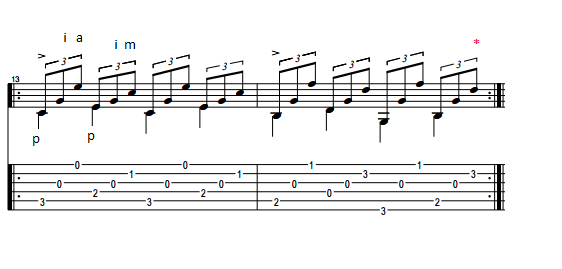|
Ricardo -> RE: Giuliani's arpeggio study fingering (Jan. 17 2016 19:11:46)
|
quote:
ORIGINAL: DavRom
quote:
ORIGINAL: Ricardo
If the G in the photo were an open D, then P-P-M...keeping fingers on their respective treble strings and pulgar on basses.
I disagree. If the G in the photo were an open D then it should still be played P-I-M because that would imply the middle harmony is moving from G to D and the thumb should only be playing the bass line
it helps if you see this as three parts:
1. the simple melody moves between strings 1 and 2 (played with A and M)
2. the harmony on 3rd string (played with I)
3. the Alberti bass line on strings 4, 5 and 6 (played with P)
once you know/understand what's what it will dictate how you play it. This is especially important when playing contrapuntal music (like Bach), but the arpeggio studies illustrate this in a simple way
IOW, using good right hand technique helps clarify the musical intent
To be honest, I am sure it's a misprint , that the pictured example is INFACT the correct version, as this more a RIGHT hand exercise. Shifting ima string group orientation has much better examples/exercises. The music here is NOT contrapuntal, so I don't really see it as a "middle" voice harmony going on. It's just an exercise, so I gave what would be the more FLAMENCO way to use the right hand. Of course your suggestion works fine as well.
|
|
|
|

